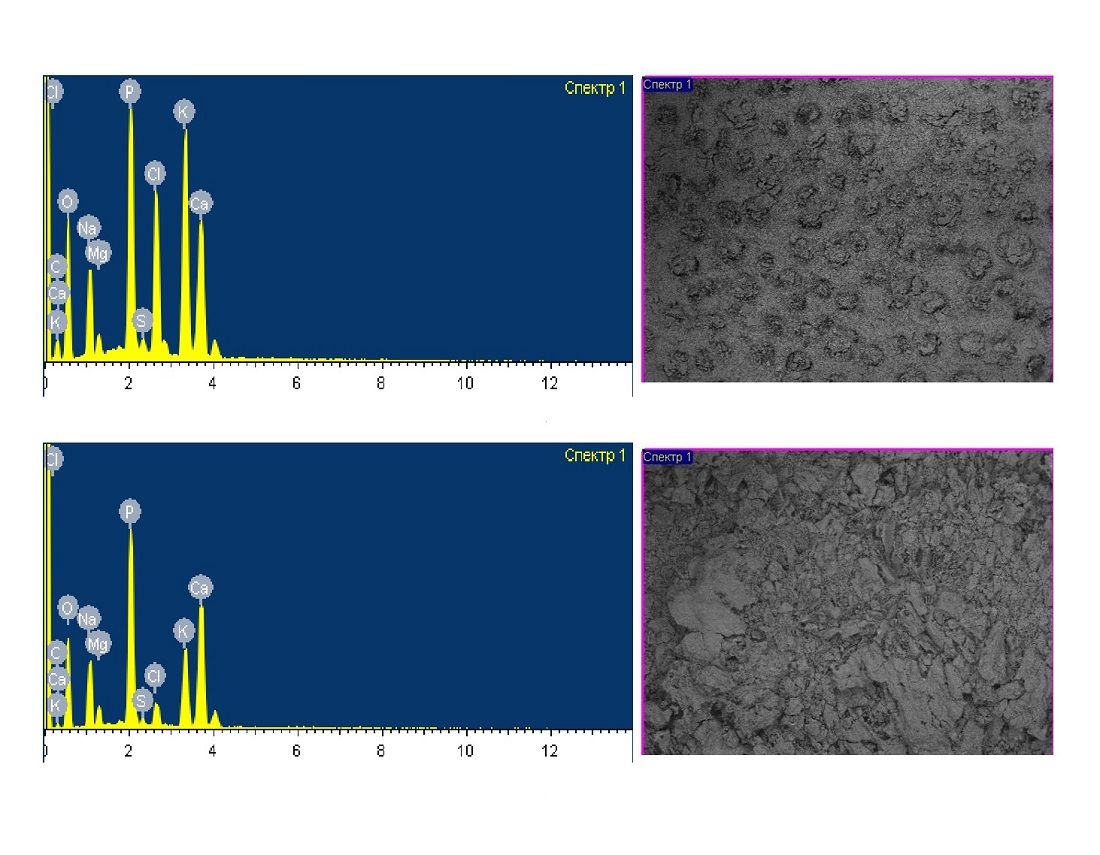Оцінка якісних характеристик ферментованого ацидофільного продукту з B. Bifidum та екстрактом Prunus padus
DOI:
https://doi.org/10.15587/1729-4061.2024.300373Ключові слова:
ацидофільні лактобактерії, біфідобактерії біфідум, пребіотики, екстракт черемхи, молочний продуктАнотація
Функціональні харчові продукти, що містять пробіотики та/або пребіотики, мають науково-практичне значення. Метод попередньої активації біфідобактерій перед їх використанням у виробництві кисломолочних продуктів надає глибокий вплив на підвищення якості одержуваних продуктів. Пошук способів скорочення часу активації біфідобактерій при виробництві функціональних харчових продуктів з пробіотиками є актуальним завданням.
Скорочення часу активації та оптимізація ферментних систем біфідобактерій за допомогою антиоксидантів мають вирішальне значення для інноваційної технології кисломолочних продуктів з пробіотиками. Об'єктом дослідження є технологія ферментованих ацидофільних продуктів, збагачених біфідобактеріями, активованими з використанням екстракту Prunus padus (черемхи), відомої своїми антиоксидантними властивостями. У готовому продукті спостерігалося значне збільшення кількості біфідобактерій, що досягло 1×109 КУО, та підвищення кількості L. acidophilus на 25,7 % через 7 днів.
Крім того, активація біфідобактерій екстрактом черемхи призвела до триразового збільшення вмісту гістидину та підвищення вмісту олеїнової, ейкозанової, лінолевої, арахідонової і докозагексаєнової кислот на 10,0 %, 26,4 %, 14,4 %, 22,6 %, і 66,6 % в експериментальному зразку порівняно з контрольним зразком відповідно. При цьому пентадеканова, селахолеїнова, ейкозатрієнова кислоти і тирозин були присутні в експериментальному зразку, але не в контрольному. Випробування на мікробіологічну безпеку не виявили патогенних мікроорганізмів у ферментованому ацидофільному продукті, проте рівень молочнокислих мікроорганізмів в експериментальному зразку перевищив норму, що підтверджує пробіотичні властивості продукту та його високу фізіологічну цінність. Таким чином, розроблений продукт відрізняється кращими смаковими якостями, більш тривалим терміном зберігання та збереженням титрів бактерій
Посилання
- Fijan, S. (2014). Microorganisms with Claimed Probiotic Properties: An Overview of Recent Literature. International Journal of Environmental Research and Public Health, 11 (5), 4745–4767. https://doi.org/10.3390/ijerph110504745
- Hidalgo-Cantabrana, C., Delgado, S., Ruiz, L., Ruas-Madiedo, P., Sánchez, Hidalgo-Cantabrana, C., Delgado, S. et al. (2018). Bifidobacteria and Their Health-Promoting Effects. Bugs as Drugs, 73–98. https://doi.org/10.1128/9781555819705.ch3
- Arboleya, S., Watkins, C., Stanton, C., Ross, R. P. (2016). Gut Bifidobacteria Populations in Human Health and Aging. Frontiers in Microbiology, 7. https://doi.org/10.3389/fmicb.2016.01204
- Tang, X., Tian, Q., Cheng, X., Li, N., Mao, X. (2013). Bifidobacterial growth–promoting effect of yak milk κ‐casein hydrolysates produced with different proteases. International Journal of Food Science & Technology, 48 (8), 1682–1687. https://doi.org/10.1111/ijfs.12138
- Reuter, G. (2001). The Lactobacillus and Bifidobacterium Microflora of the Human Intestine: Composition and Succession. Current issues in intestinal microbiology, 2 (2), 43–53. Available at: https://pubmed.ncbi.nlm.nih.gov/11721280/
- Fratianni, F., Pepe, S., Cardinale, F., Granese, T., Cozzolino, A., Coppola, R., Nazzaro, F. (2014). Eruca sativa Might Influence the Growth, Survival under Simulated Gastrointestinal Conditions and Some Biological Features of Lactobacillus acidophilus, Lactobacillus plantarum and Lactobacillus rhamnosus Strains. International Journal of Molecular Sciences, 15 (10), 17790–17805. https://doi.org/10.3390/ijms151017790
- Kim, H. S., Jeong, S. G., Ham, J. S., Chae, H. S., Lee, J. M., Ahn, C. N. (2006). Antioxidative and Probiotic Properties of Lactobacillus gasseri NLRI-312 Isolated from Korean Infant Feces. Asian-Australasian Journal of Animal Sciences, 19 (9), 1335–1341. https://doi.org/10.5713/ajas.2006.1335
- Bibi, A., Xiong, Y., Rajoka, M. S. R., Mehwish, H. M., Radicetti, E., Umair, M. et al. (2021). Recent Advances in the Production of Exopolysaccharide (EPS) from Lactobacillus spp. and Its Application in the Food Industry: A Review. Sustainability, 13 (22), 12429. https://doi.org/10.3390/su132212429
- Hsu, C. A., Yu, R. C., Chou, C. C. (2005). Production of β-galactosidase by Bifidobacteria as influenced by various culture conditions. International Journal of Food Microbiology, 104 (2), 197–206. https://doi.org/10.1016/j.ijfoodmicro.2005.02.010
- Kolev, P., Rocha-Mendoza, D., Ruiz-Ramírez, S., Ortega-Anaya, J., Jiménez-Flores, R., García-Cano, I. (2022). Screening and characterization of β-galactosidase activity in lactic acid bacteria for the valorization of acid whey. JDS Communications, 3 (1), 1–6. https://doi.org/10.3168/jdsc.2021-0145
- Kumar, M., Nagpal, R., Kumar, R., Hemalatha, R., Verma, V., Kumar, A. et al. (2012). Cholesterol-Lowering Probiotics as Potential Biotherapeutics for Metabolic Diseases. Experimental Diabetes Research, 2012, 1–14. https://doi.org/10.1155/2012/902917
- Chen, J., Chen, X., Ho, C. L. (2021). Recent Development of Probiotic Bifidobacteria for Treating Human Diseases. Frontiers in Bioengineering and Biotechnology, 9. https://doi.org/10.3389/fbioe.2021.770248
- Pereira, L., Souza, C., Behrens, J., Saad, S. (2010). Lactobacillus acidophilus and Bifidobacterium sp. In co-culture improve sensory acceptance of potentially probiotic petit-suisse cheese. Acta Alimentaria, 39 (3), 265–276. https://doi.org/10.1556/aalim.39.2010.3.3
- Szajnar, K., Znamirowska, A., Kuźniar, P. (2020). Sensory and textural properties of fermented milk with viability of Lactobacillus rhamnosus and Bifidobacterium animalis ssp. lactis Bb-12 and increased calcium concentration. International Journal of Food Properties, 23 (1), 582–598. https://doi.org/10.1080/10942912.2020.1748050
- Ndhlala, A. R., Kavaz Yüksel, A., Yüksel, M. (2022). Nutritional Supplementation of Yogurt with Jerusalem Artichoke Tubers: Organic Acid Profiles and Quality Parameters. Plants, 11 (22), 3086. https://doi.org/10.3390/plants11223086
- Bennato, F., Ianni, A., Innosa, D., Martino, C., Grotta, L., Pomilio, F. et al. (2019). Influence of Licorice Root Feeding on Chemical-Nutritional Quality of Cow Milk and Stracciata Cheese, an Italian Traditional Fresh Dairy Product. Animals, 9 (12), 1153. https://doi.org/10.3390/ani9121153
- Jia, R., Hu, X., Zhang, Y. (2023). Development of Licorice Flavored Fermented Milk. China Dairy, 4, 101–105. https://doi.org/10.12377/1671-4393.23.04.17
- Glagoleva, L. E., Zatsepilina, N. P., Nesterenko, I. P., Pevneva, D. M. (2021). About the use of plant-based complex of alfalfa in production of dairy products. IOP Conference Series: Earth and Environmental Science, 848 (1), 012049. https://doi.org/10.1088/1755-1315/848/1/012049
- Li, N., Wang, Z., Sun, C., Zhao, S., Jiang, L., Zhao, C. et al. (2019). Burdock polysaccharides enhanced the quality and antioxidative activity of fermented milk. Food and Fermentation Industries, 45 (10), 97–103. Available at: http://sf1970.cnif.cn/CN/10.13995/j.cnki.11-1802/ts.019325
- Prosekov, A. Y., Dyshlyuk, L. S., Milent`eva, I. S., Pavsky, V. A., Ivanova, S. A., Garmashov, S. Y. (2018). Study of the biofunctional properties of cedar pine oil with the use of testing cultures. Foods and Raw Materials, 6 (1), 136–143. https://doi.org/10.21603/2308-4057-2018-1-136-143
- Khamagaeva, I. S., Zambalova, N. A., Tsyzhipova, A. V., Bubeev, A. T. (2020). The development of a biologically active additive to reduce the blood cholesterol level. E3S Web of Conferences, 161, 01093. https://doi.org/10.1051/e3sconf/202016101093
- Donno, D., Mellano, M., De Biaggi, M., Riondato, I., Rakotoniaina, E., Beccaro, G. (2018). New Findings in Prunus padus L. Fruits as a Source of Natural Compounds: Characterization of Metabolite Profiles and Preliminary Evaluation of Antioxidant Activity. Molecules, 23 (4), 725. https://doi.org/10.3390/molecules23040725
- Güney, D., Güngörmüşler, M. (2020). Development and Comparative Evaluation of a Novel Fermented Juice Mixture with Probiotic Strains of Lactic Acid Bacteria and Bifidobacteria. Probiotics and Antimicrobial Proteins, 13 (2), 495–505. https://doi.org/10.1007/s12602-020-09710-2
- Servili, M., Rizzello, C. G., Taticchi, A., Esposto, S., Urbani, S., Mazzacane, F. et al. (2011). Functional milk beverage fortified with phenolic compounds extracted from olive vegetation water, and fermented with functional lactic acid bacteria. International Journal of Food Microbiology, 147 (1), 45–52. https://doi.org/10.1016/j.ijfoodmicro.2011.03.006
- Amirdivani, S., Baba, A. S. H. (2014). Green tea yogurt: major phenolic compounds and microbial growth. Journal of Food Science and Technology, 52 (7), 4652–4660. https://doi.org/10.1007/s13197-014-1670-6
- Mediza Romero, M. L., von Staszewski, M., Martínez, M. J. (2021). The effect of green tea polyphenols addition on the physicochemical, microbiological and bioactive characteristics of yogurt. British Food Journal, 123 (7), 2380–2397. https://doi.org/10.1108/bfj-07-2020-0648
- Rahmani, F., Gandomi, H., Noori, N., Faraki, A., Farzaneh, M. (2021). Microbial, physiochemical and functional properties of probiotic yogurt containing Lactobacillus acidophilus and Bifidobacterium bifidum enriched by green tea aqueous extract. Food Science & Nutrition, 9 (10), 5536–5545. https://doi.org/10.1002/fsn3.2512
- Shori, A. B., Muniandy, P., Baba, A. S. (2021). Changes in Phenolic Compounds Profiles in Tea Extracts and the Composition of these Phenolic Compounds in Yogurt. Recent Patents on Food, Nutrition & Agriculture, 12 (1), 36–44. https://doi.org/10.2174/2212798411999201123205022
- Larasati, B. A., Panunggal, B., Afifah, D. N., Anjani, G., Rustanti, N. (2018). Total lactic acid bacteria, antioxidant activity, and acceptance of synbiotic yoghurt with red ginger extract (Zingiberofficinale var. rubrum). IOP Conference Series: Earth and Environmental Science, 116, 012037. https://doi.org/10.1088/1755-1315/116/1/012037
- Telichowska, A., Kobus-Cisowska, J., Szulc, P. (2020). Phytopharmacological Possibilities of Bird Cherry Prunus padus L. and Prunus serotina L. Species and Their Bioactive Phytochemicals. Nutrients, 12 (7), 1966. https://doi.org/10.3390/nu12071966
- Telichowska, A., Kobus-Cisowska, J., Ligaj, M., Stuper-Szablewska, K., Szymanowska, D., Tichoniuk, M., Szulc, P. (2020). Polyphenol content and antioxidant activities of Prunus padus L. and Prunus serotina L. leaves: Electrochemical and spectrophotometric approach and their antimicrobial properties. Open Chemistry, 18 (1), 1125–1135. https://doi.org/10.1515/chem-2020-0121
- Parfenov, A. A., Vyshtakalyuk, A. B., Sysoeva, M. A., Sysoeva, E. V., Latipova, A. D., Gumarova, L. F., Zobov, V. V. (2019). Hepatoprotective Effect of Inonotus obliquus Melanins: In Vitro and In Vivo Studies. BioNanoScience, 9 (2), 528–538. https://doi.org/10.1007/s12668-019-0595-y
- GOST 8.639-2014. State system for ensuring the uniformity of measurements. Measuring electrodes for determination of oxidation–reduction potential. Verification procedure (2014). Federal Agency on Technical Regulating and Metrology.
- GOST 55312-2012. Propolis. Method for determination of flavonoid compositions (2012). Federal Agency on Technical Regulating and Metrology.
- GOST 33491-2015. Product fermented-milk, enriched bifidobacteriae bifidum. Specifications (2015). Federal Agency on Technical Regulating and Metrology.
- Methodical instructions MUK 4.2.577-96. Methods of microbiological control of children's and therapeutic food products and their components.
- Tastemirova, U., Mukhtarkhanova, R., Alimardanova, M., Alibekov, R., Shingisov, A. (2022). Impact of vacuum freeze-drying on the reconstituted camel milk composition. Food Science and Technology, 42. https://doi.org/10.1590/fst.61722
- GOST 54340-2011. Fermented dairy and dairy compound products. General specifications (2011). Federal Agency on Technical Regulating and Metrology.
- Patel, S., Goyal, A. (2012). The current trends and future perspectives of prebiotics research: a review. 3 Biotech, 2 (2), 115–125. https://doi.org/10.1007/s13205-012-0044-x
- Al-Hindi, R. R., Abd El Ghani, S. (2020). Production of Functional Fermented Milk Beverages Supplemented with Pomegranate Peel Extract and Probiotic Lactic Acid Bacteria. Journal of Food Quality, 2020, 1–9. https://doi.org/10.1155/2020/4710273
- Linares, D. M., Gómez, C., Renes, E., Fresno, J. M., Tornadijo, M. E., Ross, R. P., Stanton, C. (2017). Lactic Acid Bacteria and Bifidobacteria with Potential to Design Natural Biofunctional Health-Promoting Dairy Foods. Frontiers in Microbiology, 8. https://doi.org/10.3389/fmicb.2017.00846
- Melini, F., Melini, V., Luziatelli, F., Ficca, A. G., Ruzzi, M. (2019). Health-Promoting Components in Fermented Foods: An Up-to-Date Systematic Review. Nutrients, 11 (5), 1189. https://doi.org/10.3390/nu11051189

##submission.downloads##
Опубліковано
Як цитувати
Номер
Розділ
Ліцензія
Авторське право (c) 2024 Aidana Utebaeva, Eleonora Gabrilyants, Zhansaya Abish, Viktoriia Yevlash

Ця робота ліцензується відповідно до Creative Commons Attribution 4.0 International License.
Закріплення та умови передачі авторських прав (ідентифікація авторства) здійснюється у Ліцензійному договорі. Зокрема, автори залишають за собою право на авторство свого рукопису та передають журналу право першої публікації цієї роботи на умовах ліцензії Creative Commons CC BY. При цьому вони мають право укладати самостійно додаткові угоди, що стосуються неексклюзивного поширення роботи у тому вигляді, в якому вона була опублікована цим журналом, але за умови збереження посилання на першу публікацію статті в цьому журналі.
Ліцензійний договір – це документ, в якому автор гарантує, що володіє усіма авторськими правами на твір (рукопис, статтю, тощо).
Автори, підписуючи Ліцензійний договір з ПП «ТЕХНОЛОГІЧНИЙ ЦЕНТР», мають усі права на подальше використання свого твору за умови посилання на наше видання, в якому твір опублікований. Відповідно до умов Ліцензійного договору, Видавець ПП «ТЕХНОЛОГІЧНИЙ ЦЕНТР» не забирає ваші авторські права та отримує від авторів дозвіл на використання та розповсюдження публікації через світові наукові ресурси (власні електронні ресурси, наукометричні бази даних, репозитарії, бібліотеки тощо).
За відсутності підписаного Ліцензійного договору або за відсутністю вказаних в цьому договорі ідентифікаторів, що дають змогу ідентифікувати особу автора, редакція не має права працювати з рукописом.
Важливо пам’ятати, що існує і інший тип угоди між авторами та видавцями – коли авторські права передаються від авторів до видавця. В такому разі автори втрачають права власності на свій твір та не можуть його використовувати в будь-який спосіб.










